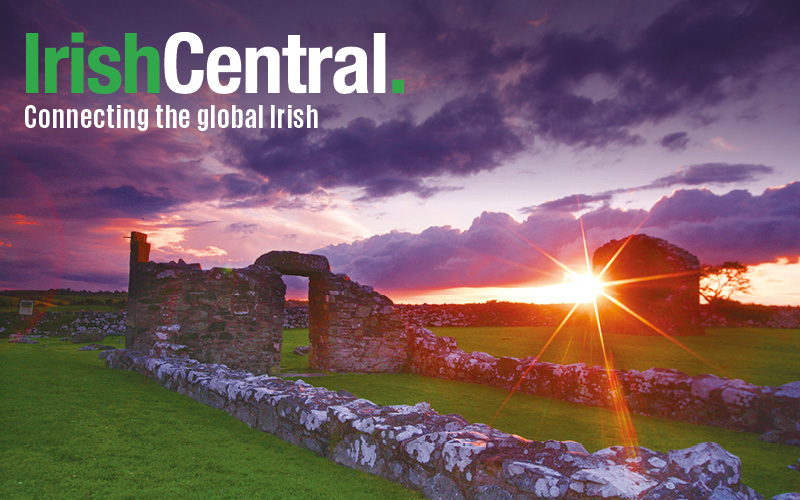Right now, Galway is buzzing. And if you are lucky enough to be planning a visit over the coming weeks or months, you might just find that the city’s residents have an extra pep in their step and are ready to greet you with even warmer than usual smiles.
Just last week, the city was designated European Capital of Culture for 2020. The announcement, which came in the midst of a hugely successful Galway International Arts Festival, was welcomed with a massive street party and celebrations which went on for an entire weekend.
The excitement is evident in the city’s narrow, medieval streets. The past few months have seen a significant increase in visitor numbers to Europe’s western-most city, as the economic recovery takes hold in the wake of the terrible crash which occurred less than a decade ago.
The streets are packed with visitors from all over the world seven days a week, as revelers take in the fantastic atmosphere and free entertainment conjured up by a wide variety of street performers and artists throughout the pedestrianized zone between the Spanish Arch and Eyre Square.
There already seems to be a party or festival every weekend between April and October in Galway City, and now the city’s residents can look forward to a year-long party in four years’ time.
A budget of $50.2 million (€45.7m) has been earmarked for the Capital of Culture project, which has the potential to create 18,000 new jobs in a city with a population of just under 80,000.
Previous cities to be awarded European Capital of Culture status in other countries have reported an increase of between 10% and 25% in the number of visitors for a full decade following the prestigious designation.
The designation is set to bring a boom to the city’s arts, cultural, and hospitality sectors.
It was achieved by a team of hard-working volunteers, who mobilized the entire city under an "I back Galway" campaign which greatly impressed the European judges.
“This is probably the biggest opportunity in the city’s history, so there is a responsibility on us all to make the absolute maximum out of it,” says Patricia Philbin, project leader of the Galway 2020 campaign.
“It is going to change Galway and provide opportunities for all those young people who are leaving our towns and cities.”
The new sense of optimism was evident at the Big Top, the huge blue tent by the banks of the River Corrib which has become an iconic image of the city in high summer during the annual Galway International Arts Festival (GIAF).
On the night the designation was confirmed, veteran singer Elvis Costello turned his sell-out show with punk rockers The Undertones into a communal celebration for 3,000 people.
Most of the bands who played the Big Top (main image) during the two week extravaganza jokingly pleaded with the audience members to invite them back in 2020.
This sense of optimism was evident at the same venue a week later, when traditional supergroup The Gloaming also rocked the tent to a capacity crowd.
No longer a city or region ravaged by emigration or any kind of inferiority complex, it was uplifting to see a huge crowd celebrate the joys of traditional Irish music in the company of acclaimed musicians including frantic fiddler Martin Hayes and veteran ‘sean nos’ singer Iarla O Lionaird.
It was a far cry from the dark days of the 1970s, when the idea of hundreds of people congregating in a huge tent to celebrate Irish music and culture would have seemed far-fetched.
Traditional music is thriving in Galway right now, as visitors can discover if they check out the free nightly sessions on offer in city centre pubs such as The Crane, Ti Coili, Taffees, and Ti Neachtain.
This year’s Galway International Arts Festival was the most successful in years, with the two week event breaking the box office target of $1.2 million (€1.1m) in ticket sales days before it came to an end on Sunday.
The city might be lacking in terms of art galleries, concert halls, and an art-house cinema, but every year the festival organizers show innovation in opening new venues, including a disused print works, empty warehouses (legacies of the economic collapse in 2007-8) and the giant blue tent at Fisheries Field.
“When I was a child, I was always so struck by the ambition of the festival, and the risks taken by the organizers. Risks taken out of necessity,” says artistic director Paul Fahy.
“Now our biggest venue is the Big Top, which is basically just four plastic walls and a plastic roof, albeit with the lap of luxury for everyone inside it. And the Festival Gallery, which normally only exists in my head for nine months of the year before we know where it’s going to be. And that gives GIAF a great sense of excitement.”
The sense of optimism extends to the Galway Racing Festival, which is taking place at the famed Ballybrit racecourse on the outskirts of the city this week.
About 800 horses will compete in 52 races throughout the week, with a total prize fund of $2.08 million (€1.9m) which is significantly up on last year.
The festival provides a $61.5 million (€56m) boost to the city’s economy each year and organizers are expecting to at least match last year’s combined attendance of 140,000 over the seven days.
Helicopters no longer dominate the city’s skyline during the Galway Races as they did during the Celtic Tiger “boom” years, but the city’s hospitality sector is happy to see modest growth after attendance figures slumped during the economic downturn.
“There was a slight increase last year, and we would be happy to see that kind of growth again this year,” says Michael Moloney, manager of Galway Racecourse. “Everyone seems to be talking about the Galway Races again this year.”
Not to be outdone, the city’s sports teams are enjoying a bumper year. Both Galway’s GAA hurling and football teams are looking forward to big days out at Croke Park in August, while rugby team Connacht – who were almost put out of business in 2003 – captured the hearts of the nation when they won the Pro12 League title back in May.
Connacht might not have the budget to match bigger teams such as Leinster and Munster, but led by the irrepressible New Zealander Pat Lam they have really tapped into the new mood of optimism which has taken over the City of the Tribes.
All in all, these are heady days in Ireland’s Western capital, a long way from the dark and distant days when impoverished emigrants on ‘coffin ships’ would set sail from Galway Bay for new lives in the New World with sadness in their hearts and tears in their eyes.
This article was submitted to the IrishCentral contributors network by a member of the global Irish community. To become an IrishCentral contributor click here.




Comments